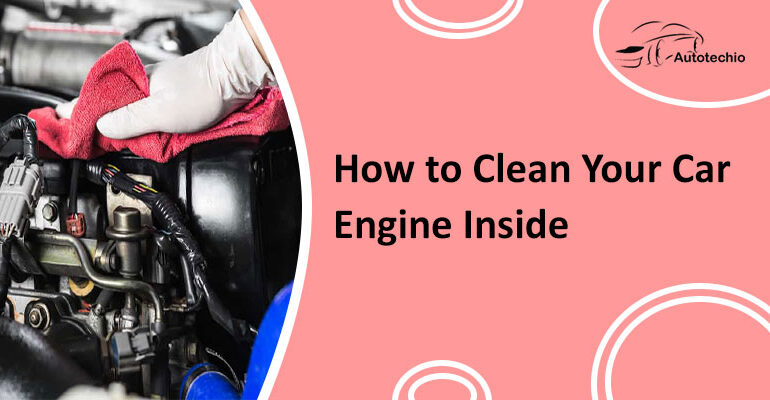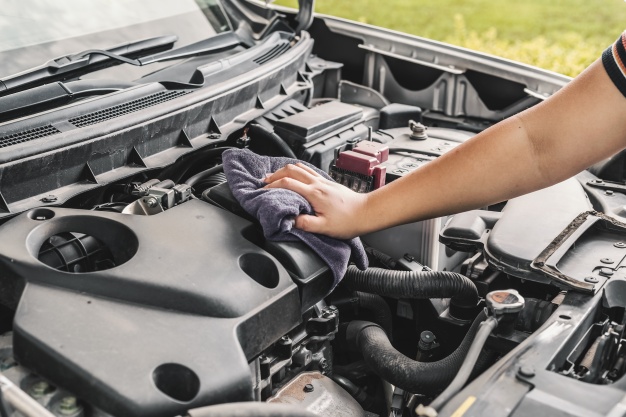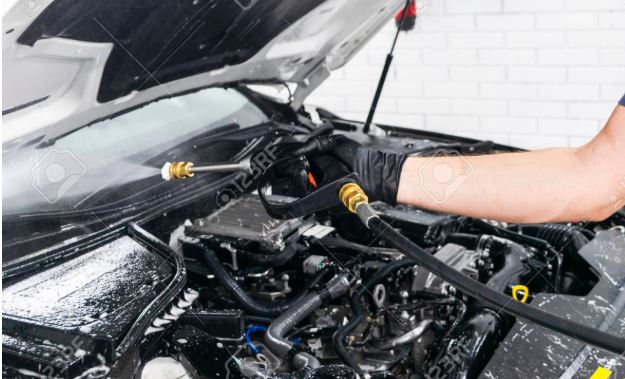Today we will love to discuss how to keep clean your car engine. Because the engine is one of the most important parts of the vehicle which helps your car or vehicle to move from one place to another place. The engine is also known as the heart of the car. Because without this the vehicle cannot move a single centimetre too. So it is necessary to clean your engine with the exterior and interior of the car. You can also clean your car engine without water.
How to Clean Your Car Engine
A clean engine bay can make it straightforward to conduct repairs or upkeep. If it’s been a long time since your engine has been cleaned, it may take some time to allow it to soak through the grime, and a bit of elbow oil to accumulate oil deposits. It is good to clean your engine and engine bay before cleaning and washing your car. Therefore you can ensure that you can wash and rinse off any decomposition that reaches the painted components.
Ideally, choose a hot day. Warm weather, especially low humidity with some air, will help in drying the engine and components after cleaning. If the car was running, flip the hood and allow the engine to cool for at least half an hour. Hot engine components can not only burn you, but they can be damaged by rapid contractions if sprayed with cold water.
Ready the Engine for Cleaning
Try and remove any debris stuck in from the grill, hood or vent opening. This debris can become an issue and even if left to sit on the engine or electrical system for a long time, a fire can occur. You can clean this by using an air compressor (air compressor can make easy your work) or with the hand brush. It is common to collect pine needles and leaves under the windshield and then fall into the engine bay.
Secure car’s electrical system
It is time to prevent the engine from getting wet. Such components are required to properly cover various components of the car’s electrical system, including batteries, to prevent any major damage by water.
Cover sensor, expiring wiring, distributor and spark plug opening. The plastic bag works well for this job and requires only a small tape or rubber band to attach it. You are not looking to make the engine waterproof, you just want to prevent these items from soaking with water.
Remove the Connectors from Battery
Spraying water directly into your engine bay can cause AC, fuses blowing, or other damage to some electrical components. Prevent the battery by loosening the bolt on the negative terminal and sliding the terminal’s ground cable. You can choose to disconnect the positive terminal to remove and clean the battery outside the engine bay.
If you leave the battery in the vehicle, tuck the ground cable sideways to prevent it from coming into contact with the terminal. If you allow the battery within the vehicle, tuck the bottom cable to the aspect to forestall it from returning into contact with the terminal.
Degrease the Engine
There are many brands of engines you can choose from, but most of them operate in the same way. Spray the entire engine compartment with a degreaser. Any household degreaser will work, whether it is a kitchen cleaner or an engine degreaser. Spray the degreaser on the engine from top to bottom, as this will make sure total coverage.
Degreaser of the engine can remove the clear coat of the paint, so do not overspray when covering the engine. Degreaser can remove glare from automotive paint. Rinse down the degreaser from the painted surfaces as soon as possible.
Let the degreaser to soak in for five minutes
If your car engine is clean, allow the degreaser to soak for about five minutes. Very dirty engines require eight to ten minutes for the degreaser to loosen everything. The longer it sits down, the better it will work. After five minutes or so the engine will start dripping.
Scrub the engine
Depending on however dirty your engine is, you will not scrub. With the engine still soaking, use a tough bristle or steel toothbrush to scrape off any giant amounts of oil, burnt oil or lime. Add a lot of degreasers if needed.
Wear eye protection when scrubbing the engine to avoid degrading your eyes. Wear gloves to prevent prolonged contact with deterioration on your skin. You only need to scrub the engine if it has grimly trapped massive deposits.
Rinse engine
If you have a power washer, you can use it on a light setting, but a standard hose will also work. Do not use a high-pressure hose to rinse the engine, as it may cut wires or penetrate the plastic you use to cover electronics. Rub the entire compartment, washing all degreaser, working from back to front. Try not to spray electrical components directly, and try to prevent spraying a lot of water in areas that cannot dry out easily.
If you rinse the engine completely and it still looks dirty, apply to degrease again and let it sit for a few more minutes.
Let Dry it
If you have compressed air available, you can blast air into the nooks and cranes to drain excess water. If not, with a towel or rag you can wipe everything. It will not release water completely, although it will facilitate taking away remaining grime.
Wash Car
Once you’ve got rinsed the engine off, you ought to begin laundry your automotive in real-time. this may make sure you clean any engine degreaser off of painted parts before it’s the prospect to try to any important injury.
Be sure to use a separate bucket, sponge, rags, and towels on the body of the car. Wax any area of the car that has been exposed to the degreaser.
Cleaning specific engine components
Remove the cable on the battery and use a wire brush to clean the terminals, until they are clean exposed metal. Soaking the ends of battery cables in an associate degree anti-corrosion chemical, such as CLR, can also guarantee a powerful electrical association.
If the battery has corrosion caused by leaky battery acid, you’ll be able to neutralize it as you clean by employing a combination of sodium hydrogen carbonate and water. Pour a touch of the sodium hydrogen carbonate into a bucket of water and blend it completely. Dip your brush within the mixture and use that to wash the battery terminals and the other areas acid might have leaked. Baking soda makes an effective cleaning solution as well as a neutralizer for battery acid.
Plastic elements of your engine, like engine covers and reservoir caps, are also tough to wash clean. Begin by employing a stiff toothed, plastic setose brush together with automotive wash soap or degreaser. Once the exhausting to get rid of grime has been removed, use a sponge with automotive wash soap to urge the last of the grime off before removal of the items with water. Avoid using a steel-toothed brush on plastic as it may scratch.
To Spot a Clean Crim Deposit Use Brake Cleaner
Brake cleaner breaks up grime and evaporates quickly. Insert the straw into the nozzle of the brake cleaner and direct it at laborious to scrub spots or areas wherever the grime is especially thick. Use a tough toothed brush to wash the grime away, then spray it once more with brake cleaner to rinse it.
Be careful using brake cleaners in enclosed areas as fumes can be dangerous. The brake cleaner is extremely flammable, so do not use it when smoking or near flames.
Follow these easy steps to clean your engine. Regular cleaning of the engine will prevent you from major damages and expenses.



